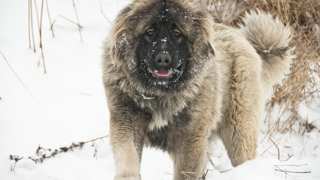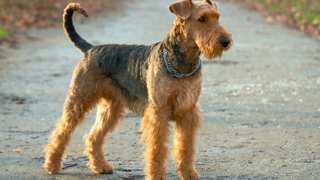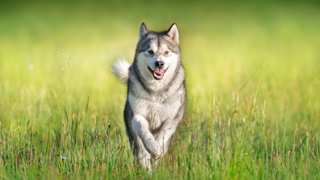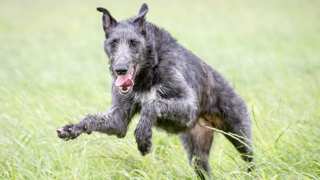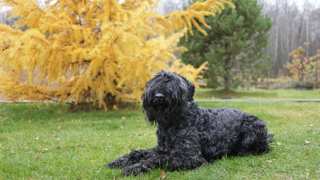Just what does a Wolf eat?The Timber Wolf is mostly carnivorous, so the Wolf diet will need to consist mainly of meats (though in the wild they're known to eat fruits and berries from time to time). The timing of the diet of a Wolf is different from a dog's: it's "feast and famine." Wild wolves may gorge on a kill and eat 20 pounds of food or more at once, then not eat again for weeks if no food is available.
Feeding the Timber Wolf that's domesticated, then, can be tricky. Adults can generally be fed about three pounds of fresh meat--chicken, beef, or lamb, among many others--once per day. Wolf eating needs for puppies, meanwhile, are different: in the wild, adult Wolves regurgitate food that the pups eat--so the food of Wolf pups will need to be ground up in a blender until six months of age.
Learn more about how and what to feed the Wolf from puppyhood through maturity in the following chart:
Dog AgeDog WeightFood TypeAmountFrequency2 Months15 lbsGround meat0.25 lbs2x/day4 Months25 lbsGround meat0.5 lbs2x/day6 Months45 lbsGround meat0.75 lbs2x/day9 Months60 lbsFresh meat2 lbs1x/day12 Months70 lbsFresh meat2.5 lbs1x/day14 Months+80 lbsFresh meat3 lbs1x/dayYes, these portions seem large for an 80-pound animal--but Timber Wolves' physical activity keeps them trim. A Wolf that's overfed (and more importantly, under-exercised) will easily become overweight--and a fat Wolf will simply be miserable and ill. You can help control your Timber Wolf's weight by having a consistent feeding schedule, and by making sure the animal gets plenty of daily exercise.
If you believe your Timber Wolf is overweight, try this test: run a hand along the Wolf's side. If you can't easily feel ribs beneath its coat, it's diet time--which means less food and more exercise!

